Ryderwood, Washington: The town with two histories
At the very end of Washington State Route 506 lies a tiny, well-kept community that bills itself as the town with two histories. And both of those histories are pretty darned amazing. Heard of Ryderwood, Washington? Neither had I until I was approached by a representative of their historical society. And the story she told me had me fascinated…I decided I had to visit to learn more!
Ryderwood is located about halfway between Centralia and Longview in western Washington, just a bit west of the I-5 corridor. A Google satellite map of the area shows a small brownish patch at the top of Cowlitz County just below the Lewis County line, surrounded on three of four sides by inches and inches of deep green forests. In fact, that’s exactly why Ryderwood was created there in the first place…for the timber.
And you’ll notice I said “created.” Unlike most other towns in Washington that grew out of an old homestead site, fur trading fort, donation land claim, or some other more traditional method, Ryderwood was one of just two planned communities established in 1923 by the Long-Bell Lumber Company.
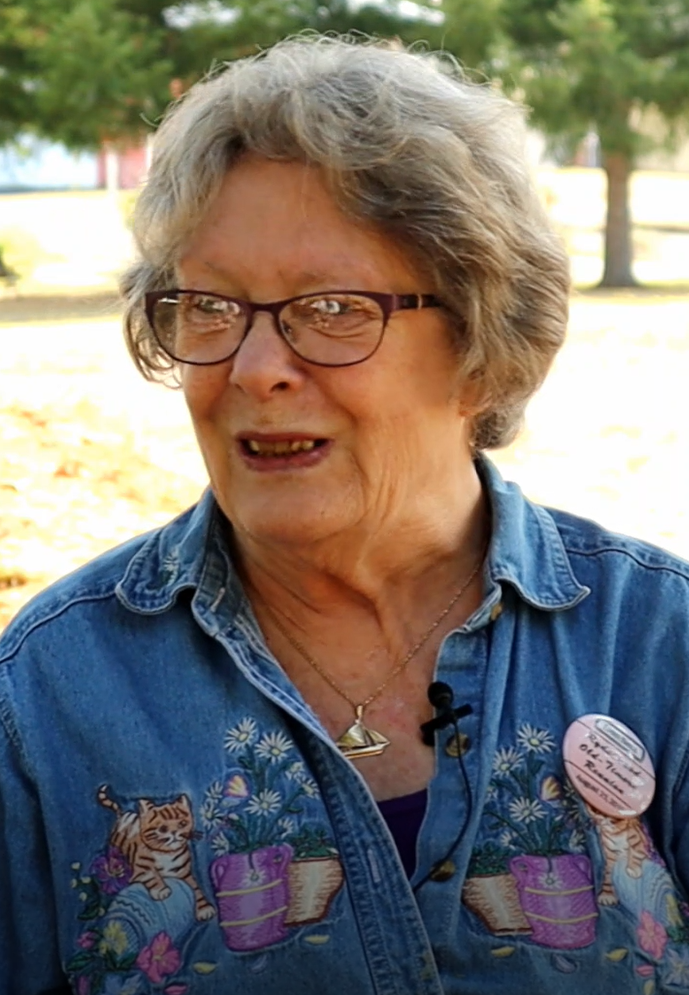 “Ryderwood has two histories. It originated in 1923 by the Long-Bell Lumber Company, and they were in business until 1953. So it was the first logging town built for loggers and their families,” said Cissy Sanders, one of the town’s historians. “It’s just got such a unique history. It’s a special little corner of the world here, tucked away. Some call it the village in the woods. People, when they hear about it, come in and say, ‘It’s a real town!'”
“Ryderwood has two histories. It originated in 1923 by the Long-Bell Lumber Company, and they were in business until 1953. So it was the first logging town built for loggers and their families,” said Cissy Sanders, one of the town’s historians. “It’s just got such a unique history. It’s a special little corner of the world here, tucked away. Some call it the village in the woods. People, when they hear about it, come in and say, ‘It’s a real town!'”
Sanders moved to Ryderwood in 2004 and fell in love with the place. June Strovas, on the other hand, grew up in Ryderwood.
 “The logging community was a first of its kind. It had never been done before. There are logging communities that are older than Ryderwood, but they were a descendant of a railroad community or an Indian community, or some other group that came and went,” said Strovas. “But Ryderwood was created out of the woods. And it was specifically used for a certain purpose, its one of a kind.”
“The logging community was a first of its kind. It had never been done before. There are logging communities that are older than Ryderwood, but they were a descendant of a railroad community or an Indian community, or some other group that came and went,” said Strovas. “But Ryderwood was created out of the woods. And it was specifically used for a certain purpose, its one of a kind.”
That specific purpose was to supply timber to the Long-Bell lumber mill in Longview – the state’s other planned community. During World War I, Kansas City timber magnate R.A. Long realized he was running out of resources to keep the company going. He started scouting locations from California to British Columbia and found Kelso, which had the resources, the river, and the railroad. But it was already established, and Long didn’t want another squalid, sprawling mill town to develop at his new site. So he planned the community of Longview, built his own railroad – the LP&N, short for Longview, Portland and Northern – straight to where the best old-growth timber grew, and established Ryderwood.
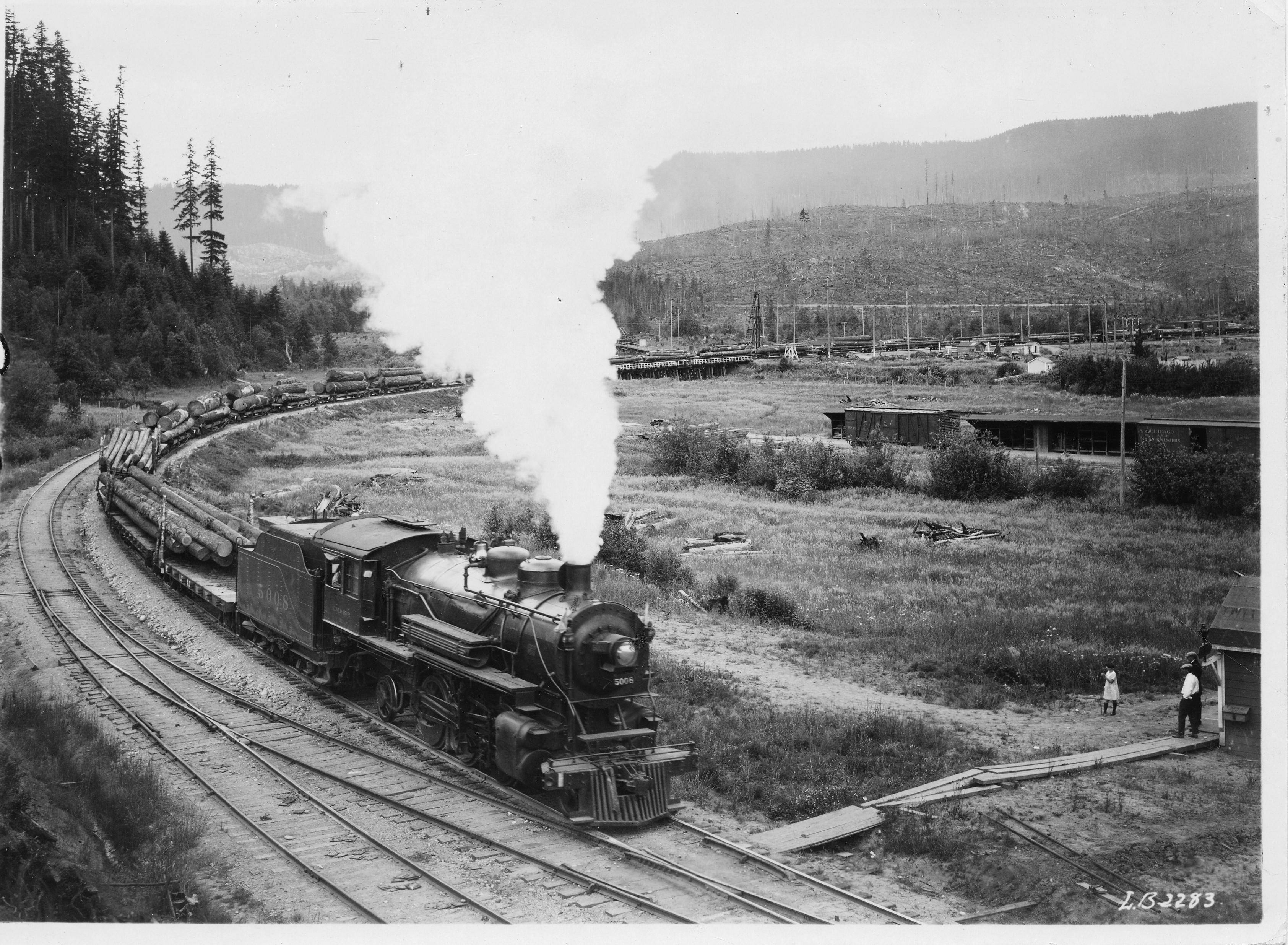
Ryderwood was named for W. F. “Uncle Bill”) Ryder, logging operations manager (a.k.a. timber cruiser) for Long-Bell, who came to the northwest to locate a timber source. The name of the logging town was chosen personally by Long to honor this veteran employee. Ryder was accompanied on his journey to the Ryderwood area by Wesley Vandercook, chief engineer for Long-Bell, who led the 100-man crew that surveyed the area.
Bill Greear is another longtime local with stories to tell about Ryderwood’s early days.
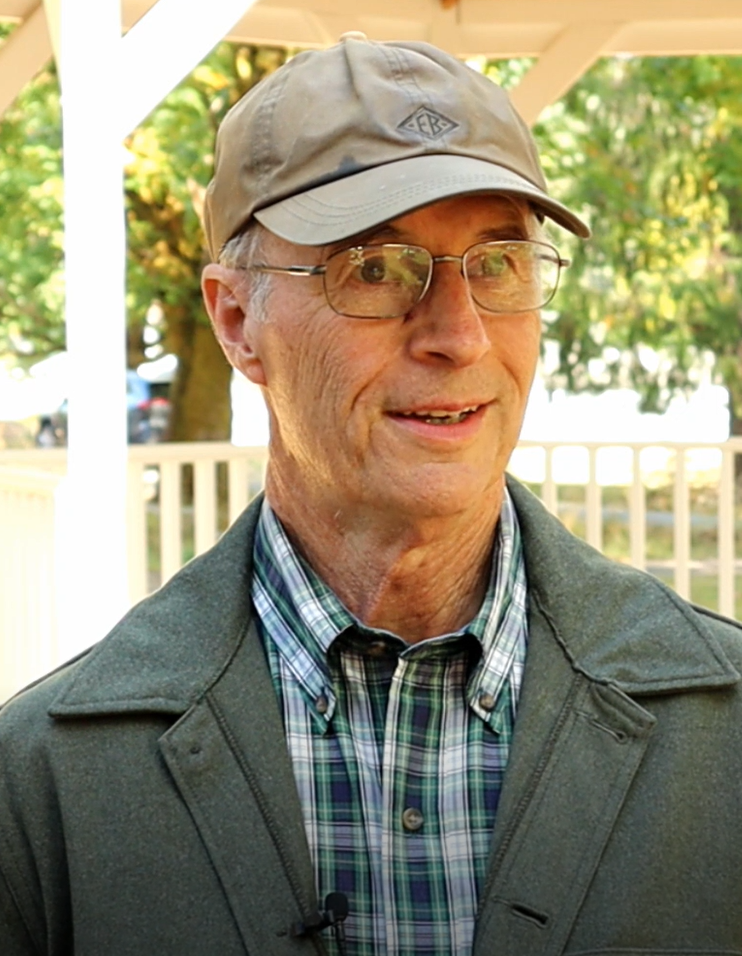 “I was born in 1942 here in the first aid station, which is now called Pioneer Hall, along with hundreds of other babies born to logger families during those logging years,” said Greear. “My dad had come here in 1934 at 19 years of age and he was starting out a choker setter. And 20 years later he finished, with the rest of the loggers, the logging that was needed and he was working as a head loader. But he was asked to stay here and become the tree farm warden. And he did that for another 20 years until he retired in 1974. So there was a family presence here throughout all those years and I took advantage of it as much as I could. I used to be able to ride with the log truck drivers out in the woods and see the operations and realize what was going on out there.”
“I was born in 1942 here in the first aid station, which is now called Pioneer Hall, along with hundreds of other babies born to logger families during those logging years,” said Greear. “My dad had come here in 1934 at 19 years of age and he was starting out a choker setter. And 20 years later he finished, with the rest of the loggers, the logging that was needed and he was working as a head loader. But he was asked to stay here and become the tree farm warden. And he did that for another 20 years until he retired in 1974. So there was a family presence here throughout all those years and I took advantage of it as much as I could. I used to be able to ride with the log truck drivers out in the woods and see the operations and realize what was going on out there.”
Gene DeBriae – sometimes known by her musical moniker, Sally Gene – is another Ryderwood resident with stories to share. She moved there with her family in 1942, just after the outbreak of World War II.
 “They were looking for work, and my dad picked up the Seattle Times paper and it said Ryderwood needs loggers. So here we are, mom and dad and us four kids in this homemade trailer that had all our belongings in it. And I remember the day we pulled into Ryderwood and drove up to the pay window and I marveled at the wooden sidewalks that are still there!” DeBriae said. “They give us a house to live in, which is next door to the one I’m living in now. There was nothing in it. No cupboards, no nothing. We all slept on the floor. This was in November, I remember it.”
“They were looking for work, and my dad picked up the Seattle Times paper and it said Ryderwood needs loggers. So here we are, mom and dad and us four kids in this homemade trailer that had all our belongings in it. And I remember the day we pulled into Ryderwood and drove up to the pay window and I marveled at the wooden sidewalks that are still there!” DeBriae said. “They give us a house to live in, which is next door to the one I’m living in now. There was nothing in it. No cupboards, no nothing. We all slept on the floor. This was in November, I remember it.”
“They gave us that little house to live in, and I remember daddy getting up and going to work about one month later, the 18th of December. He was killed out here in the woods. 29 years old. Harry Goff.”
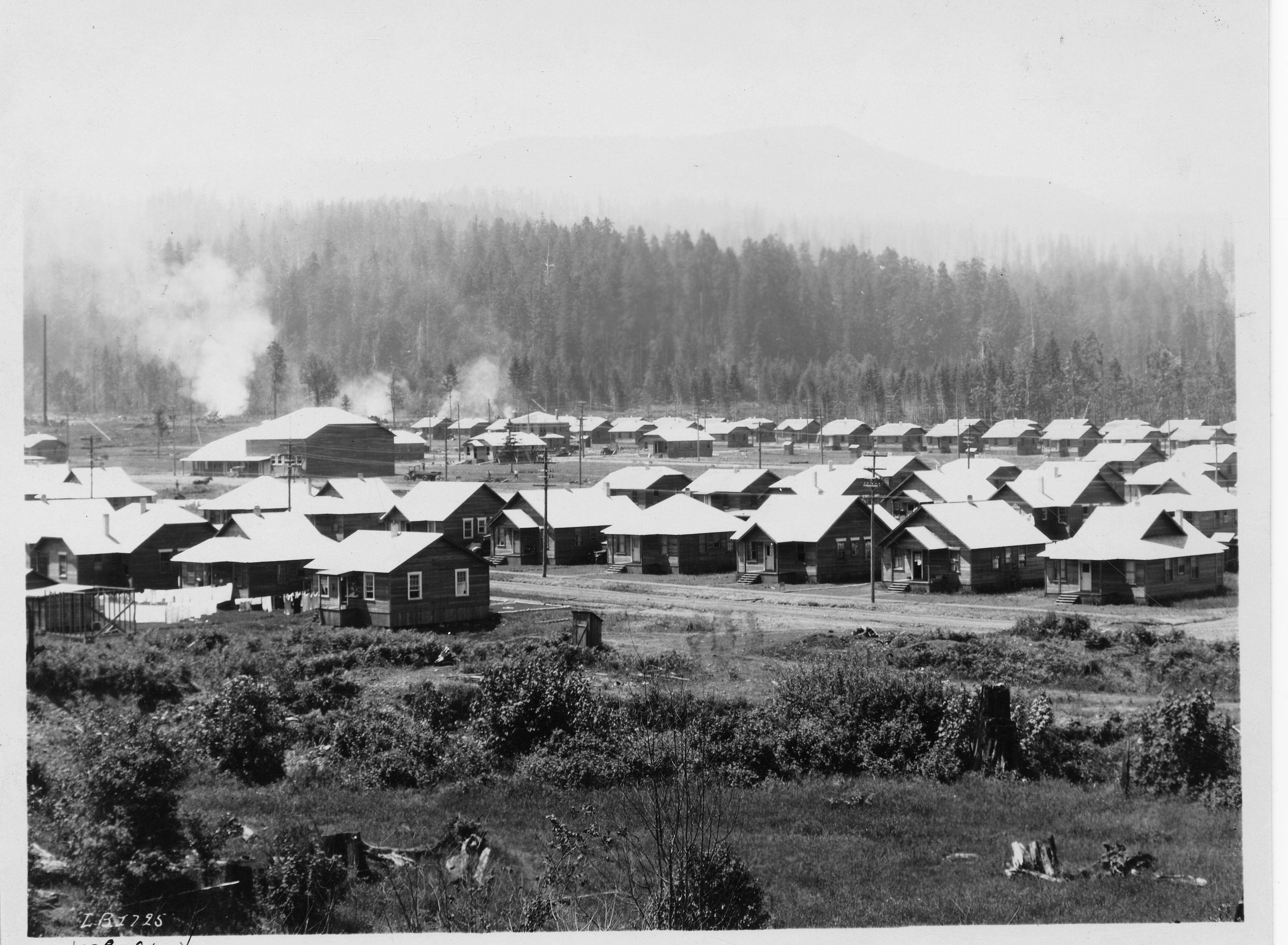
Stories like Gene’s are, unfortunately, not uncommon for the children of Long-Bell’s loggers, as June Strovas can attest.
“When I was born in 1936, I was born in a skid shack. And we were in and out of Ryderwood for the next 30 years, for a couple different reasons, and we ended up coming back in 1948 after my father returned from the military,” said Strovas. “He’d spent a couple of years in the Philippines, and it took about a year after he came back for him to get back on the payroll, because they were taking them in lines. And in August of 1948, we came back and he became head scaler for Long-Bell.”
“Dad was one of the most honest people that walked on this Earth and he was well-liked. Guys were very happy that he was back scaling the logs, and he did until they closed the camp.”
During the war, many of the area’s young men left to serve their country – forcing Long-Bell to backfill his workforce from an unlikely source: men from the Appalachian Mountains of North Carolina. Landon Cothren’s family brought him to Ryderwood when he was just a baby.
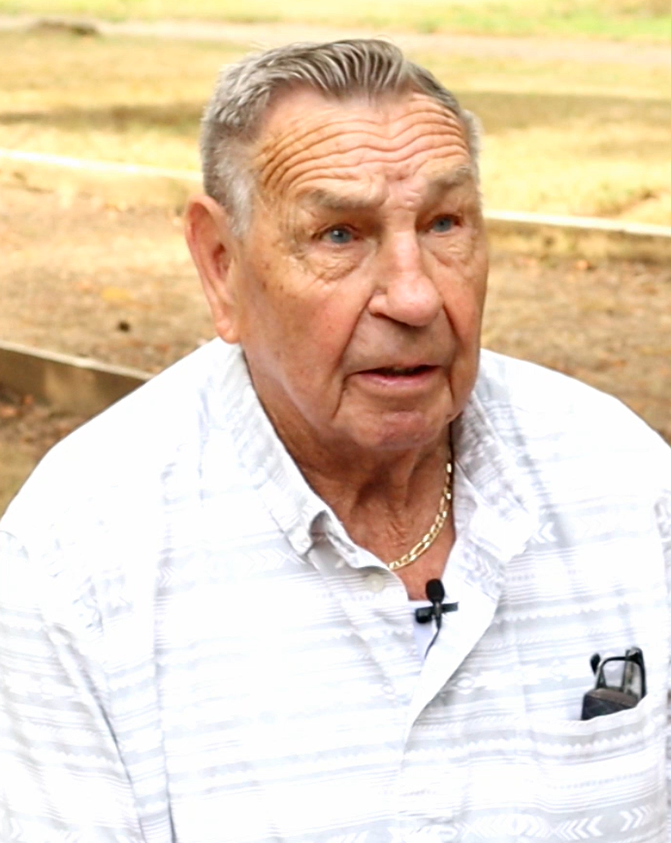 “They got my dad to go back to North Carolina and bring out loggers to work here. This is in ’45 and ’46, and the town was really really booming then,” said Cothren. “We had a hospital. It was a first aid station, and we had two stagecoaches that ran from here. They’d take you into Vader, Winlock, Chehalis, Centralia, and Longview.”
“They got my dad to go back to North Carolina and bring out loggers to work here. This is in ’45 and ’46, and the town was really really booming then,” said Cothren. “We had a hospital. It was a first aid station, and we had two stagecoaches that ran from here. They’d take you into Vader, Winlock, Chehalis, Centralia, and Longview.”
Despite growing up in a rough-and-tumble logging camp, Gene DeBriae remembers it being a close-knit town with friendly neighbors.
“We knew everybody in town. We could roam around town, it wasn’t a problem. 10 o’clock at night, we could still be out. Mom would step out and whistle, and when we heard that whistle we knew it was time to come home,” DeBriae said. “We’d come home at noon, and mom would have the washing done and she’d have a tub full of clothes ready to hang out. Sister and I’d come home and take those close and hang them on the lines out back. You know, it was a wonderful way to grow up.”
Until one day in 1952…when all that changed.
“In 19 and 50, we heard rumors that the town was going to be sold, so everybody was scrambling to see where they could move,” said Cothren. “The last log that was hauled out of here was in August of ’52. Ben Thomas had logging trucks. He had eight of them, and he came in and hauled all the logs out after the railroad had shut down.”
The prospects of the Long-Bell Lumber Company – a thriving national business that had literally built two Washington towns out of nothing; that served as a pillar of southwestern Washington life for so long, people couldn’t imagine what life would be like without it; the economic driver upon which thousands had depended for food, water, and shelter for their families – had unthinkably begun to waver.
“Instead of the 80 to 100 years that was initially planned, it took 30 years,” said Greear. “Technology advanced things, and by the time the depression rolled around in the early 30s, they were reduced to half the number of loggers who started.”
When Long-Bell moved in, business was done with steam locomotives, donkey engines, and trees were felled by the muscle and sweat of hundreds of men swinging hand-sharpened double-bit axes deep in the Washington woods. By the time Long-Bell moved out, the bulgines were replaced by diesels, then trucks, and half as many men were left with tools powered by gasoline instead of elbow grease. It was only a matter of time before Ryderwood was left without a purpose as well.
“In 1953, pretty much the loggers and the logs were gone and they were in the process of tearing the place down, when an innovative real estate investor said, ‘I’ll bet we can buy that whole town and make it into a retirement community.’ So that’s exactly what they did,” said Sanders.
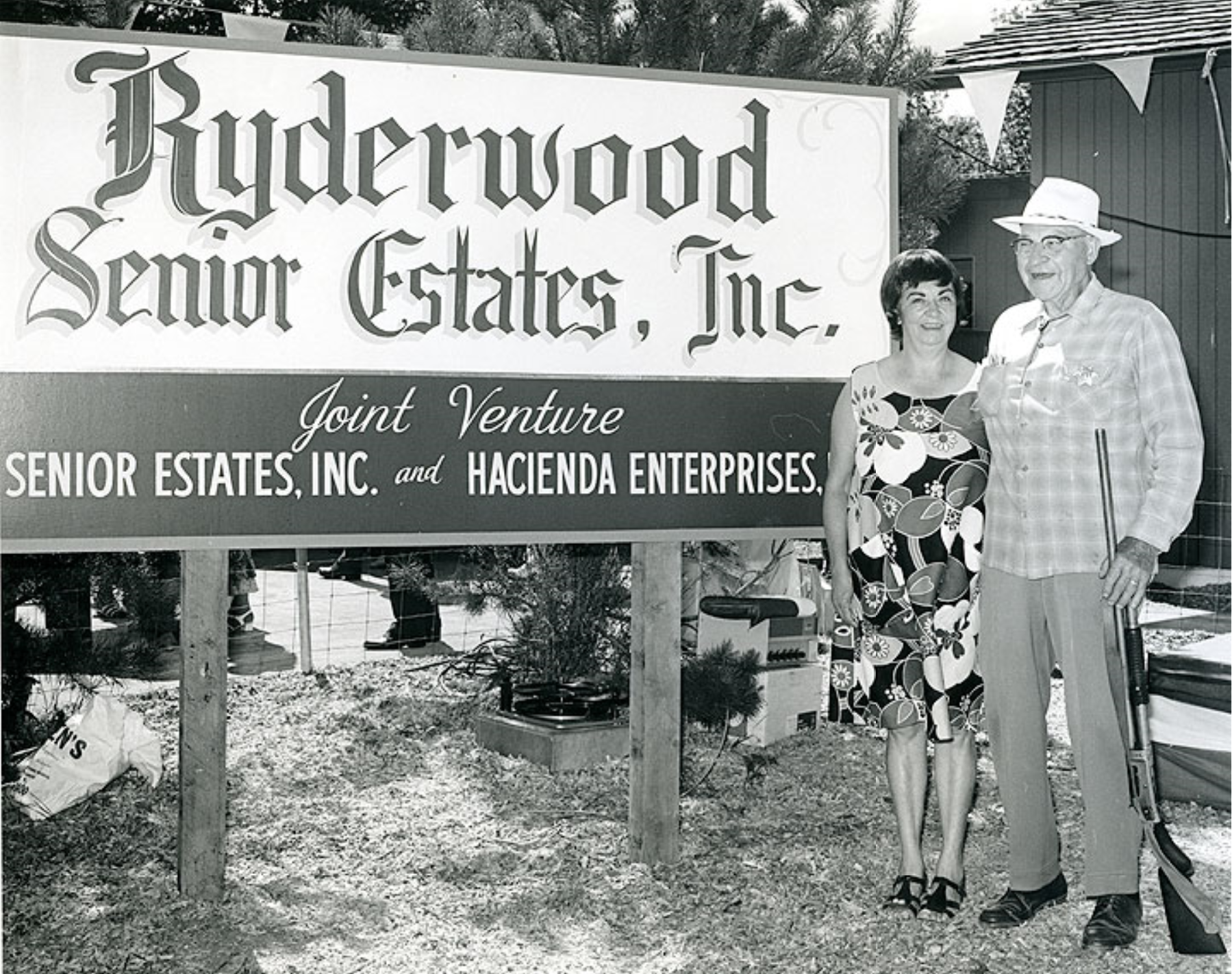
And thus began the second chapter of Ryderwood’s history. Harry Kem, Sr., and his group of investors, Senior Estates, Inc., purchased the planned logging town for $90,000 and transformed it into the country’s first retirement community. About half of the nearly 400 original homes were salvageable (around 175 of which are still occupied today), and an independent group of retirees quickly took advantage of the opportunity to snatch up all the homes by 1955.
By the 1970s, there were some significant changes. Hacienda Estates built some new homes, Harry Kem, Sr., passed away, Cowlitz County Public Works replaced the aging water and sewer system in 1976, and Forum Investments took over ownership from Senior Estates in 1978 and developed the remaining properties. Nearly all of more than 250 properties today are privately owned and occupied by persons over the age of 55. The Ryderwood Improvement and Service Association, which has managed the town’s operations since 1953, continues to do so, allowing residents of Ryderwood to slow down and enjoy their peaceful, hidden community.
“The people who come here to visit, they see a well-tended town. They see people who are happy to be here. They see a high level of community spirit and volunteer spirit,” said Greear. “And all that was here in the earlier history as well as the current one.”
“It’s a peaceful, quiet village in the woods, and people love it,” said DeBriae.
And every year since 1954, former residents of Ryderwood during the logging camp years have gathered together to reconnect and revisit old memories. Though their numbers have dwindled significantly, the 2019 Ryderwood “Old Timers'” Reunion was no different.

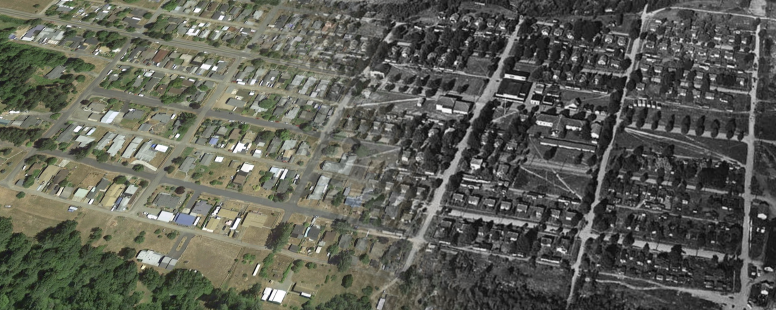

Hi Leslie! Thanks for reaching out. I’m afraid I don’t have any additional information on Ryderwood residence, but I know who does! Please visit http://www.ryderwood.org/contact.html and contact the Ryderwood history club. They should be able to help you track down your family information.
Hi! I am looking for the history of my family. My mother was Margaret Ann Linton, sister to Mert Linton, and daughter to Mert Linton Sr. I believe. My mother has long passed and I am trying to find out a bit of our family history. Ancestry only goes back as far as Mert Linton Sr. There is nothing before that. I can’t remember the name of his wife, my grandmother. I find that very sad. She died shortly after I was born, so I didn’t know her. From what I know, the Lintons were drinkers, and Mert Sr. was rumored to be a moonshiner at one time. Mert Jr. moved to Oregon I believe, but not sure where. He had a daughter, my cousin, and we had some contact as teenagers, but we fell out of touch. I can’t remember her name either. I am 71 now and would love some history to put down in our record books and to leave for my children and grandchildren. Margaret married my father, Lester J. Parker (from Centralia) at about 16 yrs. of age I believe, and they moved out of town. My Dad had been in the Navy and was a logger for many years. Any help with our history would help. Thank you in advance for your help! Leslie Parker Harper (married name)
Am looking for a town/post office named Monahan, assume on the Monahan River, possibly a logging camp. 1910. Pauline Niemi/Nierni sister of Erick Riihela (from Hamina, Finland,) had PO Box 98. Any information greatly appreciated.
We’ll have our annual “May family reunion” this Memorial Day weekend.
Grandpa May was the fire warden after a work-ending career as a bull-buck for Longbell.
Grandma ran the telephone office. All the switch board equipment was in a front room of their house on Main Street.
Hi Cynthia! Your best bet for sharing the photos would be to donate them to the Cowlitz County Historical Museum. The curator, Bill Watson, can be reached at WatsonB@co.cowlitz.wa.us. Hope you’re able to donate to their collection!
How can I share two original photos of the Longbell Camp me of Ryderwood, WA.
Thank you
picture one – https://www.familysearch.org/photos/artifacts/137537048?cid=mem_copy
picture two – https://www.familysearch.org/photos/artifacts/137538320?cid=mem_copy
Pingback: Cowlitz County, Washington"The Land of Six Rivers" - bryan d spellman
Pingback: FAMILY PLAN? FARM THE KIDS OUT FOR PEACE AND QUIET